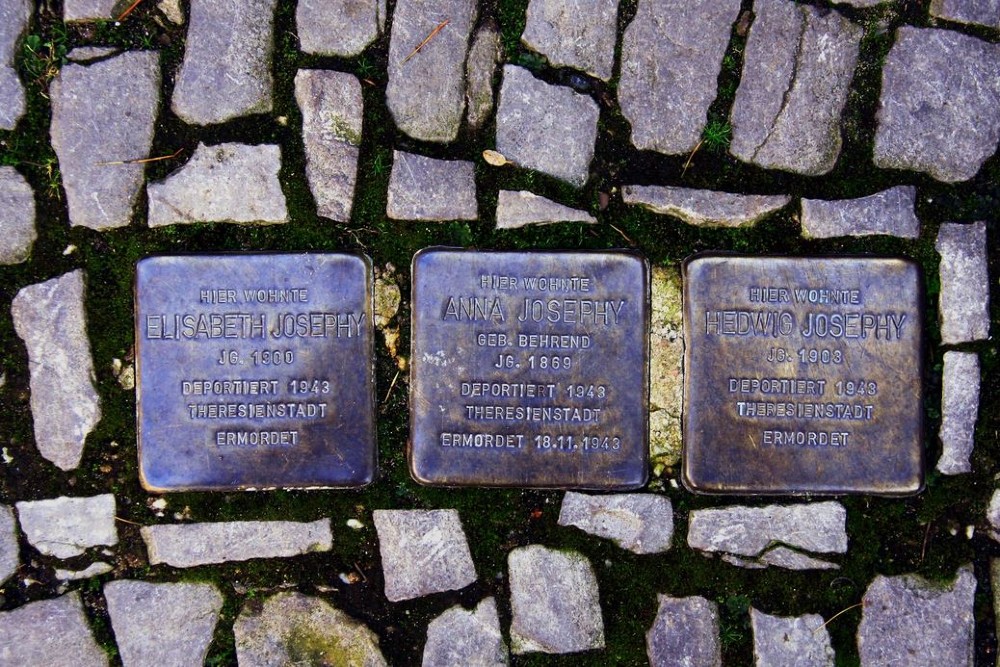Stumbling Stones Ebertstraße 4
These small, brass, memorial plaques (Stolpersteine or stumbling stones) commemorate:
* Elisabeth Josephy, born 1900, deported 1943, Theresienstadt, murdered.
* Anna Josephy née Behrend, born 1869, deported 1943, Theresienstadt, murdered 18.11.1943.
* Hedwig Josephy, born 1903, deported 1943, Theresienstadt, murdered.
Background
Anna Behrend and Georg Jacob Josephy married in 1897 and had three children – Berthold (b. 1898), Elisabeth (b. 1900), and Hedwig (b. 1903). The family moved to Jena in 1905, and 7 years later moved into a new home at this location on Ebertstraße (then called Sedanstraße). Georg died in 1919. Berthold became an associate professor in economics and social sciences in 1929. Because of the the anti-Jewish actions, he resigned and emigrated to Sweden in 1934.
Anna and her two daughters remained in Germany through increasing anti-Jewish harrassment. Elisabeth was a music teacher, and Hedwig was a technical assistant. Both were members of a Protestant church.
Anna Josephy was deported on 28 June 1943 to Theresienstadt and murdered there 5 months later, on 18 November. She was 73.
Elisabeth and Hedwig both had the opportunity to flee to the Netherlands, but both refused: they were required to have jobs, and the only work open to them was as domestic servants. They remained in Jena. The circumstances around their deaths are unknown. Records of their deportations or deaths were not found. They were not in the recorded deportation of their mother, who was on an elder transport. One source says they were almost certainly ordered to be deported and says it is possible that they killed themselves.
"Stolpersteine" is an art project for Europe by Gunter Demnig to commemorate victims of National Socialism (Nazism). Stolpersteine (stumbling stones) are small, 10x10cm brass plaques placed in the pavement in front of the last voluntary residence of (mostly Jewish) victims who were murdered by the Nazis. Each plaque is engraved victim’s with the name, date of birth, and place (mostly a concentration camp) and date of death. By doing this, Gunter Demnig gives an individual memorial to each victim. One stone, one name, one person. He cites the Talmud: "A human being is forgotten only when his or her name is forgotten."
Do you have more information about this location? Inform us!
Source
- Text: Fedor de Vries & Anne Palmer
- Photos: :Linda:
- Jena Lichtstadt History: Anny, Elisabeth, and Hedwig Josephy
- Yad Vashem Central Database of Shoah Victims’ Names
- MyHeritage: Anna Behrend
- holocaust.cz
- Stolpersteine.eu





